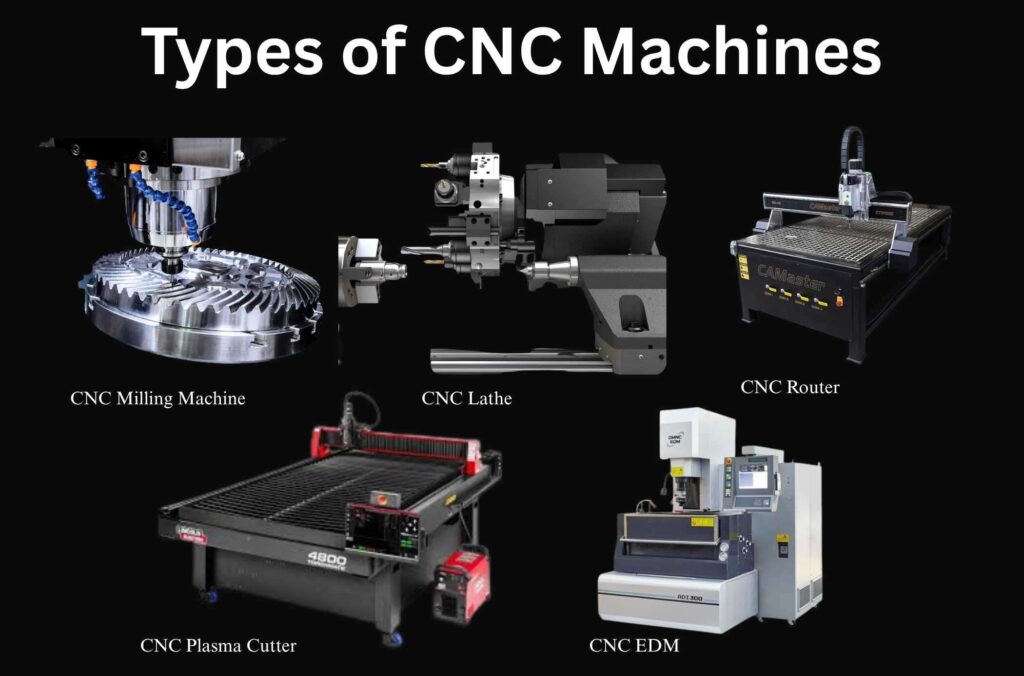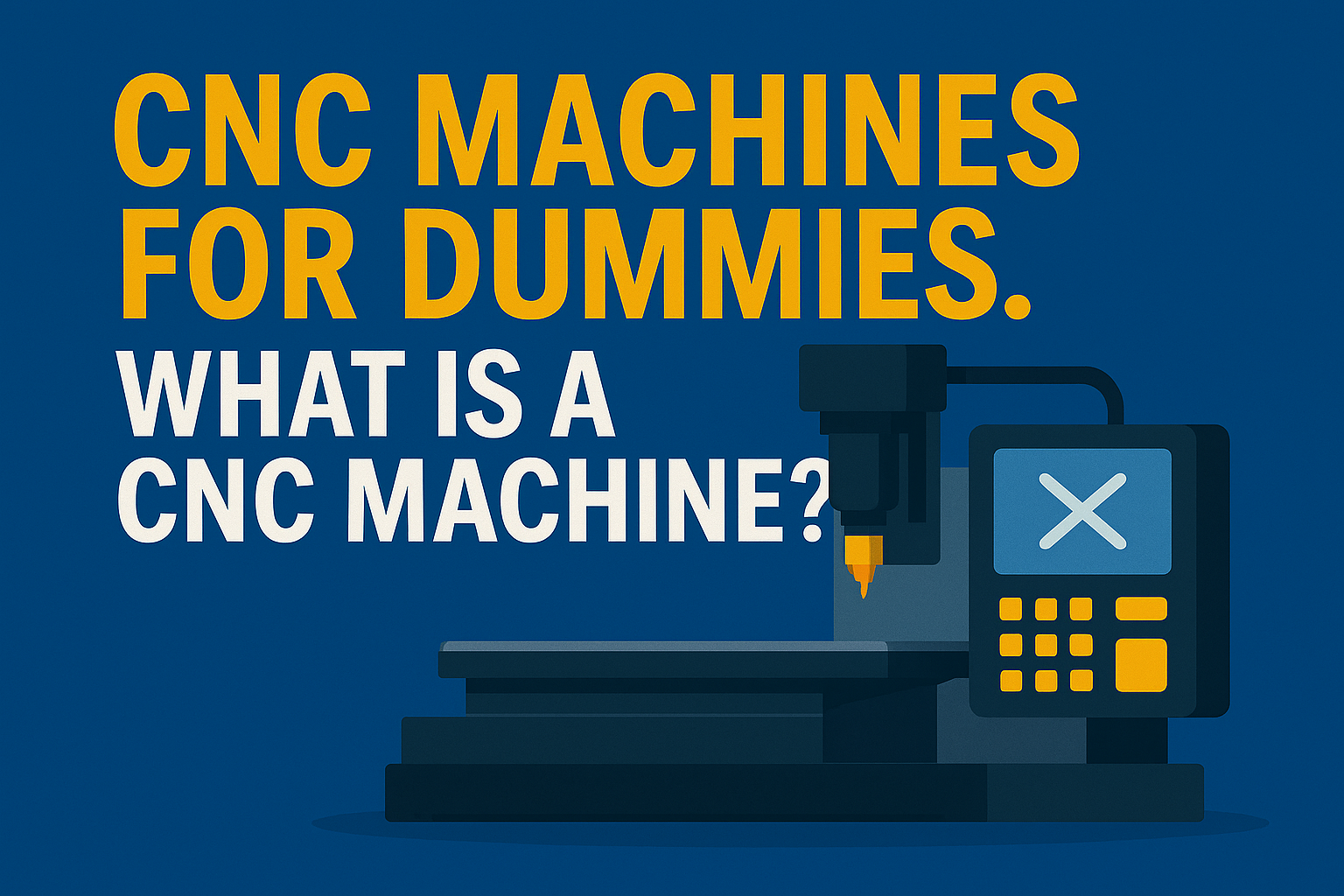Quick Overview
A CNC machine (Computer Numerical Control machine) is a programmable manufacturing tool that uses software and code (typically G-code) to control movement and machining operations with extreme precision. Unlike traditional manual machines, CNC machines automate cutting, drilling, milling, and shaping processes across multiple axes. They're essential in modern manufacturing for producing complex parts with consistent accuracy, making them a cornerstone in industries such as aerospace, automotive, and medical device production. CNC systems are known for improving efficiency, reducing human error, and enabling scalable, repeatable fabrication.
If you’re new to industrial manufacturing or curious about how precise parts are made for everything from smartphones to satellites, it all begins with CNC machines. But what is a CNC machine, really?
CNC (Computer Numerical Control) machines are the foundation of today’s automated fabrication world. Whether you’re working in aerospace, automotive, or metal fabrication, understanding how these machines work—and what they’re capable of—is essential.
CNC machines come in various forms, and their applications range from cutting to milling to complex part production. If you’re curious about real-world use cases, check out our guide to CNC plasma cutter applications
What Is a CNC Machine?
A CNC machine is a computer-controlled system that automates the movement of tools and machinery to precisely shape raw materials. Instead of relying on manual operation, CNC machines follow pre-programmed instructions (G-code) to perform consistent, complex tasks.
In simpler terms: you load a design file, press start, and the machine does the work—accurately and repeatedly.
Key Components of a CNC Machine
Every CNC machine includes several essential parts:
Controller: The “brain” that interprets the code and controls movement.
Drive motors: Control movement along different axes (X, Y, Z).
Spindle: Rotates the cutting tool.
Worktable: Secures the material in place.
Coolant system: Prevents overheating during operation.
Types of CNC Machines
Not all CNC machines are alike. Here’s a breakdown of the most commonly used types:
| Machine Type | Primary Function | Industries Used In |
|---|---|---|
| CNC Milling Machine | Cuts complex shapes with rotary cutters | Aerospace, Medical, Mold Making |
| CNC Lathe | Spins materials to shape with tools | Automotive, Industrial Engineering |
| CNC Router | Cuts wood, plastics, soft metals | Furniture, Signage, Packaging |
| CNC Plasma Cutter | Uses plasma torch to slice metal | Fabrication Shops, Heavy Machinery |
| CNC EDM (Wire/Cut) | Uses electrical discharge to cut metal | Tooling, Die Making, Precision Parts |

How CNC Machining Works
Let’s simplify the process:
Design Creation
Engineers design a part using CAD (Computer-Aided Design) software.Tool Path Generation
The CAD file is converted into CAM (Computer-Aided Manufacturing) instructions that dictate tool paths.Programming (G-Code)
CAM software generates a G-code file—a set of commands that tell the CNC machine how to move.Machine Setup
The operator loads the raw material and prepares the machine.Execution
Press start, and the CNC machine shapes the part with micrometer-level accuracy.
Advantages of CNC Machining
Why is CNC machining so widely used? Because it offers:
Unmatched precision
Repeatability across large runs
Low human error
Quick prototyping
Flexible material compatibility (metals, plastics, composites)
This makes it the go-to solution for both mass production and high-precision custom work.
Real-World Applications of CNC Machining
Medical Implants: High-precision titanium hip joints or dental implants.
Aerospace Components: Complex, lightweight aluminum structures for jet engines.
Prototyping: Quickly creating testable versions of new product parts.
Even within daily consumer goods—appliances, electronics, and cars—there’s likely a CNC-machined part inside.
Common Misconceptions About CNC Machines
“They’re only for metal.”
Not true. CNC machines cut wood, plastic, foam, and composites too.“Too expensive for small shops.”
Costs have dropped. Many job shops now rely on entry-level CNCs under $10K.“They replace humans.”
CNCs require skilled programmers and operators—humans are still essential.
CNC Machining and Automation in Industry 4.0
CNC machines are now central to modern production workflows. Explore how CNC fits into manufacturing environments and why it’s revolutionized precision work.
As manufacturers transition to smart factories, CNC machines are integrating with:
IoT sensors
Machine learning diagnostics
Automated material handling systems
This creates a seamless, data-driven workflow that boosts efficiency and reduces downtime.
To learn more about real-world CNC machining, companies like Dews Foundry offer a range of CNC services designed for both high-volume and specialty projects.
Backed by Research: CNC Efficiency and Quality
A study published in Procedia CIRP found that CNC machining significantly reduces production defects while increasing throughput and product consistency, especially when compared to manual machining (source).
What Is a CNC Machine? It’s the Future of Manufacturing
CNC machines are more than tools—they’re the backbone of modern industry. From rapid prototyping to high-tolerance aerospace components, these machines blend speed, accuracy, and repeatability in a way no manual process can match.
If you’re working in manufacturing—or planning to—understanding what a CNC machine is and how it works is no longer optional. It’s your competitive advantage.
Whether you’re just beginning to explore CNC technology or preparing to invest in your own equipment, it’s important to take the next step with confidence. Learn what to look for in a system that fits your specific needs in our guide on choosing the right CNC machine. For a hands-on perspective, check out a day in the life of a CNC machinist to see how these tools are used in the real world. And if you’re ready to operate one yourself, our step-by-step guide on how to use a CNC machine walks you through the fundamentals.
FAQ
CNC stands for Computer Numerical Control. It refers to the automated control of machining tools by means of a computer executing pre-programmed sequences of commands.
CNC machines operate using pre-coded instructions, which allows for highly precise and repeatable movements. Manual machining requires hands-on operation for each step, which introduces variability and longer cycle times.
CNC machines can perform a wide range of tasks, including milling, drilling, turning, routing, cutting, engraving, and grinding. The specific function depends on the type of CNC machine and tooling used.
Yes, CNC machines still require human oversight. Operators are needed for programming, loading materials, monitoring machine performance, and performing maintenance and quality checks.
Absolutely. CNC machines can be configured to work with various materials such as metals, plastics, wood, composites, and more, depending on the tooling and process setup.



